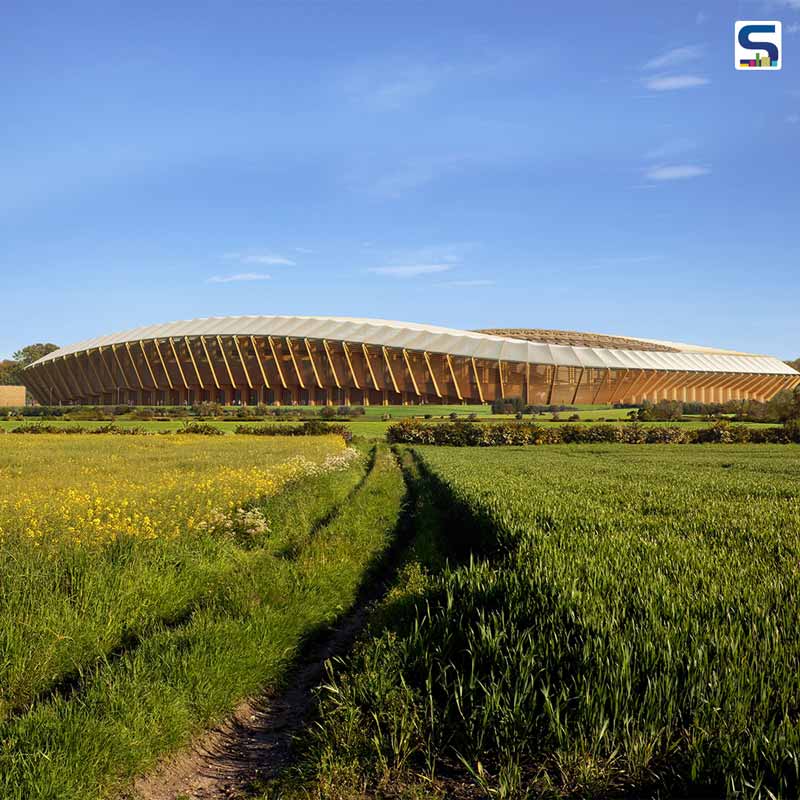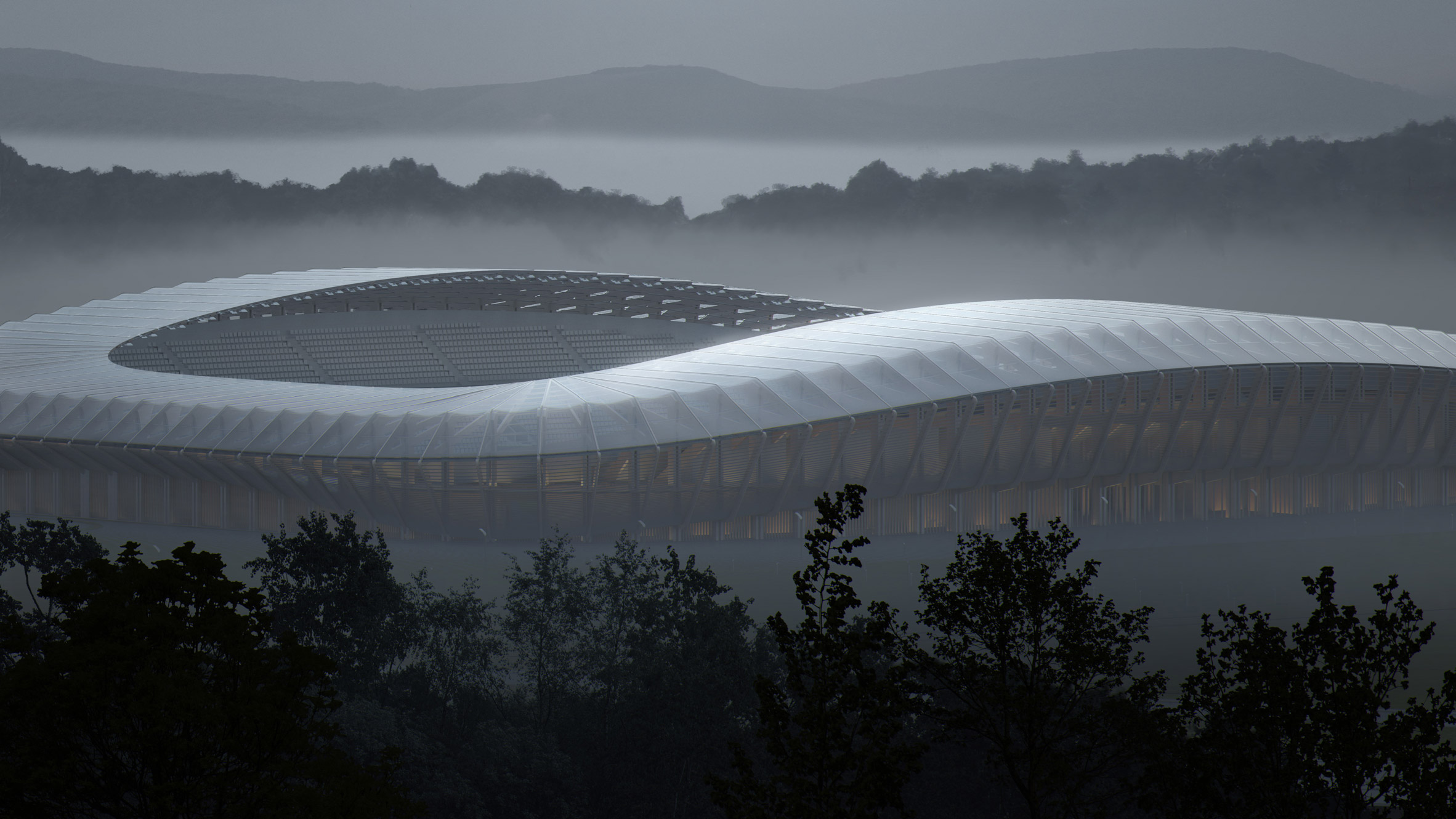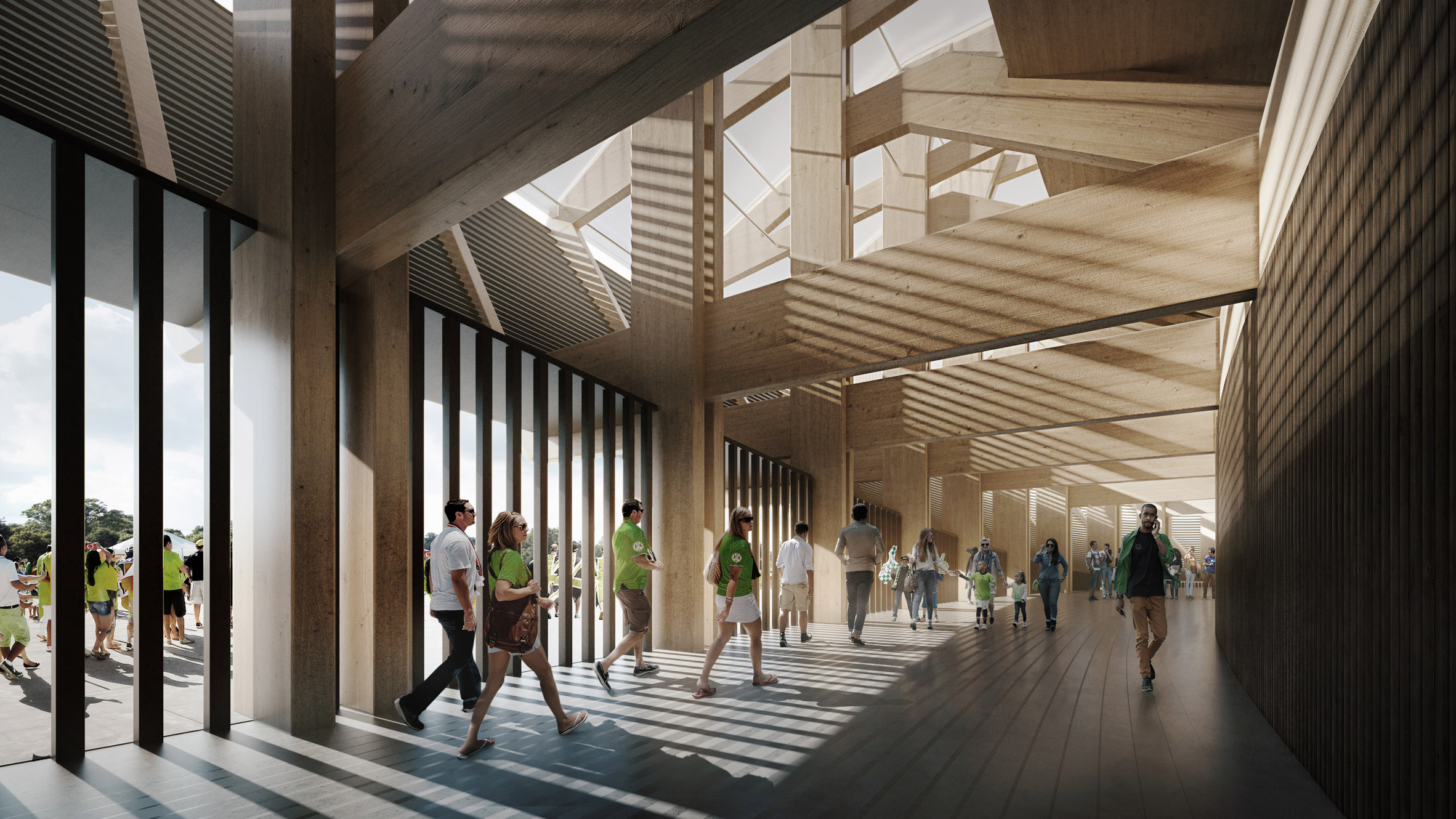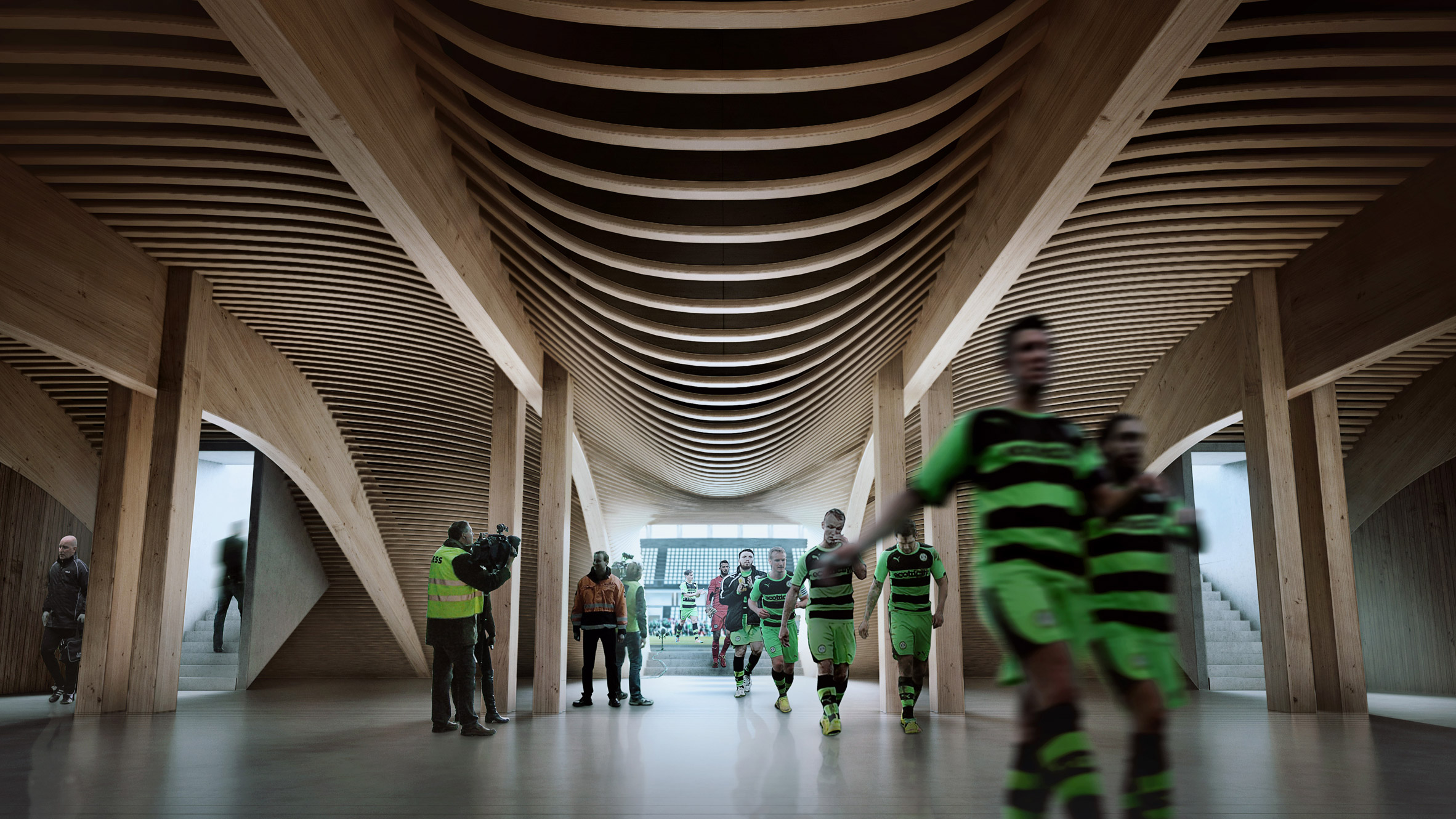
After years of delays, Zaha Hadid Architects has finally got the green light from the Football League to design the Eco Park Stadium for Football club Forest Green Rovers. The League has allowed FCFGR to move into the world's first all-timber football stadium in Gloucestershire, England. Dubbed Ecopark, this stadium has a 5,000- spectator capacity. It is a carbon neutral stadium with the facility of on-site renewable energy generation to showcase that sustainable architecture can be dynamic and attractive. It will be part of the new Eco Park, a green technology business park planned for junction 13 of the M5 motorway. SURFACES REPORTER (SR) presents here more information about this stadium:
Also Read: Trump to Inaugurate Largest Cricket Stadium in the World

Sustainably Sourced Timber in Construction
The stadium is said to be the world's greenest football stadium constructed with almost every component made of sustainably sourced timber, including the cantilevering roof and louvred cladding. Also, it embodies low carbon construction methods and operational processes. Laminated timber is considered a highly safe, durable and recyclable material.

Dale Vince, Ecotricity founder and chairman of the club, explained to Sky Sports TV: "From an environment point of view, 75 per cent of the carbon footprint of all stadia in their entire lifetime comes from the materials they're made from. It's not about the energy used to run them, it's embedded on day one. We'll have the lowest carbon footprint of any stadium anywhere in the world since the Romans invented concrete."
Also Read: Mass Timber Architecture: Benefits and Common Misconceptions
An All-Weather Pitch
Zaha Hadid Architects has changed the stadium design of one grass pitch to an all-weather pitch and also followed a revised landscaping strategy. It was done to lower the issues that the stadium design did not adequately contribute to the loss of green fields it will be developed. The firm also increased matchday transport and has done explanations regarding noise. Once finished, the stadium will become a new home for football club Forest Green Rovers with all vital new facilities for its local community.

The stadium has an organic grass pitch watered with recycled rainwater. There is also the use of solar panels to power their lightings. Electric "mow bot" helps to mow the pitch. The bot uses GPS technology to automatically cut the grass, with the grass clippings provided to local farmers or cultivators to put on their soil.

The stadium is surrounded by a transparent membrane that allows the grass to grow under the sunlight. This membrane also minimizes shadows that could otherwise disturb the players during the game.
An Iconic Stadium
Zaha Hadid Architects won the competition to design the stadium in 2016. Councillor Miranda Clifton said of the new timber stadium, "This building is iconic, it could be a tourist attraction."

In December 2019, the ZHA's stadium design proposal won six favourable votes out of ten.
“The really standout thing about this stadium is that it’s going to be almost entirely made of wood — the first time that will have been done anywhere in the world,” said Dale Vince, Ecotricity founder and Forest Green Rovers chairman. “When you bear in mind that around three quarters of the lifetime carbon impact of any stadium comes from its building materials, you can see why that’s so important — and it’s why our new stadium will have the lowest embodied carbon of any stadium in the world.”
Keep reading SURFACES REPORTER for more such articles and stories.
Join us in SOCIAL MEDIA to stay updated
SR FACEBOOK | SR LINKEDIN | SR INSTAGRAM | SR YOUTUBE | SR TWITTER
Further, Subscribe to our magazine | Sign Up for the FREE Surfaces Reporter Magazine Newsletter
You may also like to read about:
5 World-Class Cricket Stadiums Are Under Construction in India and Bangladesh
OMA unveils design for the largest football stadium in Netherlands
New National Stadium, Tokyo, is an Architectural Delight
Mass Timber Architecture: Benefits and Common Misconceptions
and more...